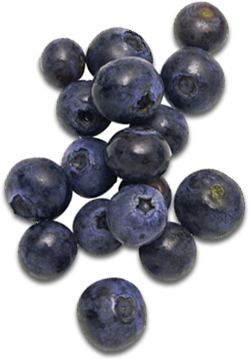no items to display
Prevent Stroke Naturally: Fruits and Vegetables Associated with Lower Risk of Stroke
Would you be surprised to find out that adding just one extra apple to your daily diet could cut your risk of stroke by one third? That was the amazing finding of a new study published in the journal Stroke, which sought to find out if eating fruits and vegetables is associated with stroke prevention. [1]
What is a stroke, exactly? The best way to describe it is a “brain attack,” because a stroke is caused by the same thing as a heart attack: insufficient blood flow leading to oxygen deprivation. The main difference is that during a heart attack, cardiovascular blood flow becomes obstructed and causes damage to the heart, while during a stroke, cerebral blood flow is blocked and causes damage to the brain. There are two types of stroke: ischemic (caused by blood clots) and hemorrhagic (caused by ruptured blood vessels.) Stroke is serious: It is the fourth-leading cause of death in the United States and a common cause of disability.
The new study analyzed the results of 20 previous studies, published over 19 years in the U.S., Europe, and Asia and involving over 760,000 subjects, who had a total of 16,891 strokes. After controlling for other factors that contribute to stroke risk — such as smoking, alcohol consumption, blood pressure, cholesterol, body mass index, and level of physical activity — the researchers found that eating fruits and vegetables is associated with a reduced risk of stroke. This finding held true for men and women, across ages, and for both types of stroke.
How significant were the reductions in risk? For every 200 grams of fruit consumed, stroke risk dropped by 32 percent. For every 200 grams of vegetables, it dropped by 11 percent. In case you’re not in the habit of measuring your food in grams — and I know I’m not — 200 grams is about one large apple or one and a third cup of broccoli. That’s a huge reduction in stroke risk from a relatively small portion of fruits and/or vegetables! Researchers specifically mentioned citrus fruits, apples, pears, and leafy vegetables as potentially protective.
Lead researcher Dr. Yan Qu put it this way: “Improving diet and lifestyle is critical for heart and stroke risk reduction in the general population…In particular, a diet rich in fruits and vegetables is highly recommended because it meets micronutrient and macronutrient and fiber requirements without adding substantially to overall energy requirements."
(I was curious as to why fruits were three times more protective than vegetables so I did a little research. It turns out that white-fleshed fruits like apples and pears, as well as berries, contain a phyto-nutrient called quercetin, which reduces blood pressure.[2] Hypertension, or high blood pressure, is a major risk factor for stroke.)
USDA guidelines recommend adults consume five to seven servings of fruits and vegetables daily. But if you’re like most people, you don’t meet those targets. According to a report by the Centers for Disease Prevention and Control, Americans only eat fruit 1.1 times a day and vegetables 1.6 times a day.[3] (The report doesn’t say how much they are eating per sitting, but I’m guessing it’s not a lot!)
After reading this new research, I know I’ll be making an extra effort to eat my fruits and veggies to help prevent stroke, whether I’m adding berries to my breakfast smoothie, slicing an apple on my salad, or throwing a handful of spinach into my scrambled eggs. Do you have any special tricks for incorporating more fruits and vegetables into your diet?
Sources:
[1] Hu D, et al. Fruits and vegetables consumption and risk of stroke: A meta-analysis of prospective cohort studies. Stroke. 2014 May 8 [Epub ahead of print].
[2] Edwards RL, et al. Quercetin reduces blood pressure in hypertensive subjects. The Journal of Nutrition. 2007 Nov;137(11):2405-11.
[3] Centers for Disease Control and Prevention. State Indicator Report on Fruits and Vegetables 2013. Atlanta, GA: Centers for Disease Control and Prevention, U.S. Department of Health and Human Services; 2013.






